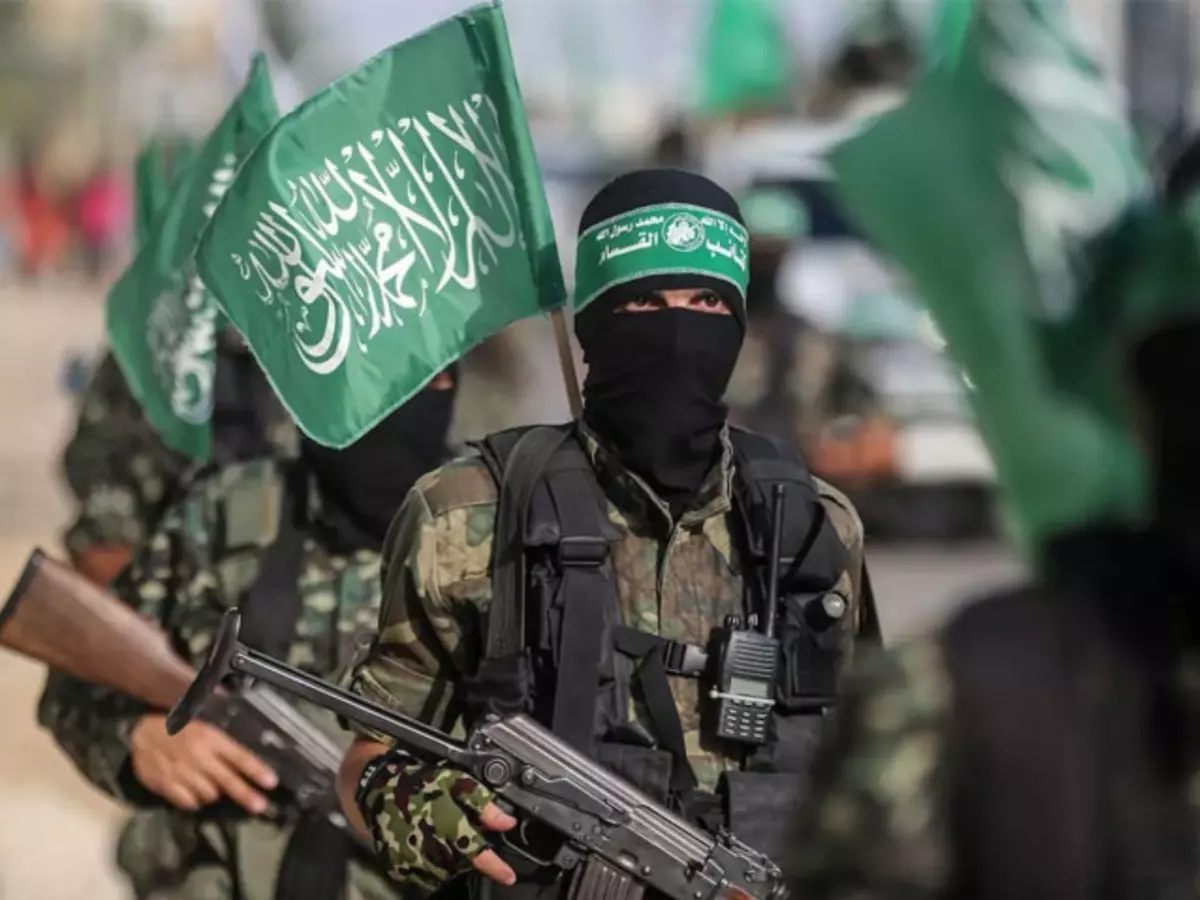Explained: What Is Al Qassim Brigades Linked To Palestinian Hamas Group
The Izz ad-Din al-Qassam Brigades (Arabic language: ????? ?????? ?? ????? ???????; named after Izz ad-Din al-Qassam, often shortened to Al-Qassam Brigades) is the Palestinian Islamist political organisation of Hamas' military arm. Marwan Issa is the current practice leader.

The Izz ad-Din al-Qassam Brigades (often shortened to Al-Qassam Brigades) is the Palestinian Islamist political organisation of Hamas' military arm. Marwan Issa is the current practice leader of the group. A Delhi Police investigation into a case of cryptocurrency theft has revealed the involvement of al-Qassam Brigades.
The group was founded in 1992 under the leadership of Yahya Ayyash with the primary goal of forming a cohesive military organisation to support Hamas' goals, which at the time included preventing the Oslo Accords from being implemented. The Izz ad-Din al-Qassam Brigades reportedly attacked both Israeli soldiers and civilians between 1994 and 2000.
 Abed Rahim Khatib/Flash90
Abed Rahim Khatib/Flash90
The group became a primary target of Israel at the start of the Second Intifada. Many observers were taken aback by the group's power and ability to carry out intricate and fatal strikes.
The Izz ad-Din al-Qassam Brigades had multiple cells in the West Bank, but the majority of them had been destroyed by 2004 as a result of IDF operations in the area. Hamas, on the other hand, maintained a strong presence in Gaza, which is often regarded as its heartland.
The European Union, the United States, Australia, and the United Kingdom have designated the Izz ad-Din al-Qassam Brigades as a terrorist organisation.
How did the group get its name?
Izz ad-Din al-Qassam, an Arab militant during the British Mandate of Palestine, was the inspiration for the group's name. Al-Qassam formed the Black Hand, an anti-Zionist and anti-British militant group, in 1930.
The group's organisational structure
Hamas' Izz al-Din al-Qassam Brigades are a key component of the organisation. They are subordinate to Hamas' broad political and ideological goals, although they enjoy significant decision-making autonomy.
 Mustafa Hassona/Anadolu Agency
Mustafa Hassona/Anadolu Agency
In 1997, political scientists Ilana Kass and Bard O'Neill compared Hamas' relationship with the Brigades to Sinn F¨¦in's relationship with the Irish Republican Army's military wing, citing a senior Hamas official as saying, "The Izz al-Din al-Qassam Brigade is a separate armed military wing, which has its own leaders who do not take orders (from Hamas) and do not tell us of their plans in advance."
Using the IRA as an example, Kass & O'Neill claimed that the separation of the political and military wings shielded Hamas' political leaders from responsibility for terrorism, while the plausible deniability this provided allowed Hamas to participate in peace talks, as Sinn F¨¦in's Gerry Adams had done.
Even when fighting against Israeli incursions, all militants wear a distinctive black hood with the group's green headband affixed, which keeps their names and positions in the group hidden until their deaths.
The Izz ad-Din al-Qassam Brigades are organised into autonomous cells, and even senior members are sometimes uninformed of other cells' operations. This permits the group to regenerate in a predictable manner after a member's death.
Several airstrikes targeted the group's leaders during the al-Aqsa intifada, killing many members including Salah Shahade and Adnan al-Ghoul. Mohammed Deif, the current leader of the brigades, is still at large and is claimed to have escaped at least five murder attempts.
How has the group been beneficial for Hamas?
Hamas' military might is also responsible for the Gaza Strip's decade-long rule. Following Hamas' 2006 legislative victory, the group moved to strengthen its grip on Gaza by forming its own security unit, known as "The Executive Force," which reports only to Hamas' Interior Ministry.
During the Hamas-led coup and following purging of Fatah competitors, the Executive Force and the Izz ad-Din al-Qassam Brigades were the primary forces that took control of Gaza.
The military wing of Hamas is not a separate body, but rather an inherent element of the organisation. Hamas' leadership includes high-ranking military operations who play a key role in decision-making. Ahmed Jabari, Muhammad Deif, and Yahiya Sinwar have led the military wing.
In February 2016, Sinwar, a convicted killer with a long history of membership in Hamas' armed wing, was chosen as the Gaza Strip's Hamas Chief, succeeding Ismail Haniyeh. Sinwar's seamless shift from military to political leadership illustrates that the two wings of the movement are inextricably linked.
For more on news and current affairs from around the world please visit Indiatimes News.
